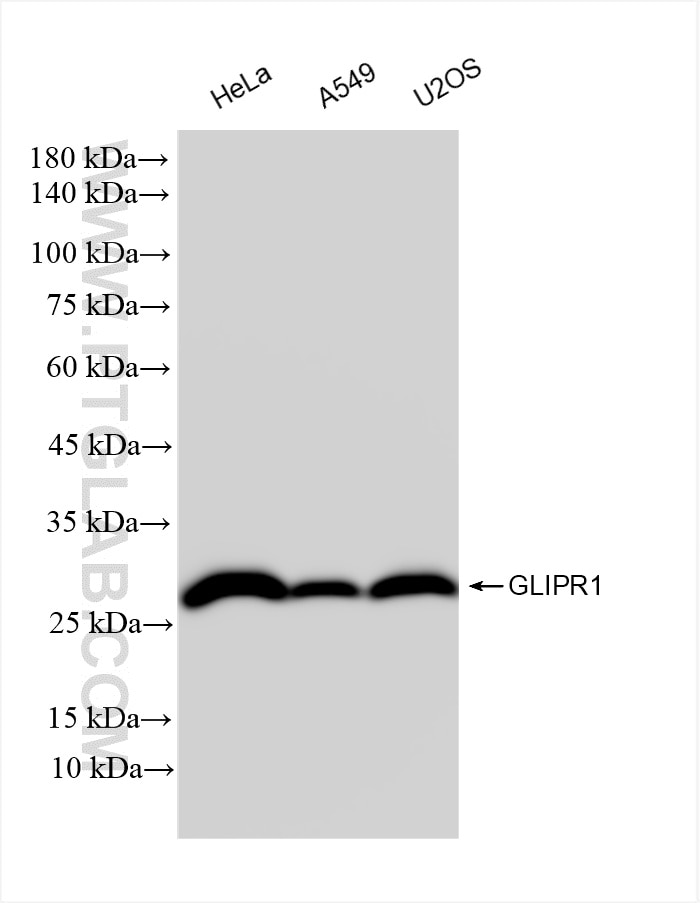Tested Applications
| Positive WB detected in | HeLa cells, A549 cells, U2OS cells |
Recommended dilution
| Application | Dilution |
|---|---|
| Western Blot (WB) | WB : 1:2000-1:10000 |
| It is recommended that this reagent should be titrated in each testing system to obtain optimal results. | |
| Sample-dependent, Check data in validation data gallery. | |
Product Information
85345-1-RR targets GLIPR1 in WB, ELISA applications and shows reactivity with human samples.
| Tested Reactivity | human |
| Host / Isotype | Rabbit / IgG |
| Class | Recombinant |
| Type | Antibody |
| Immunogen | GLIPR1 fusion protein Ag3205 Predict reactive species |
| Full Name | GLI pathogenesis-related 1 |
| Calculated Molecular Weight | 266 aa, 30 kDa |
| Observed Molecular Weight | 30 kDa |
| GenBank Accession Number | BC012510 |
| Gene Symbol | GLIPR1 |
| Gene ID (NCBI) | 11010 |
| Conjugate | Unconjugated |
| Form | Liquid |
| Purification Method | Protein A purification |
| UNIPROT ID | P48060 |
| Storage Buffer | PBS with 0.02% sodium azide and 50% glycerol, pH 7.3. |
| Storage Conditions | Store at -20°C. Stable for one year after shipment. Aliquoting is unnecessary for -20oC storage. 20ul sizes contain 0.1% BSA. |
Background Information
GLIPR1, also known as related to testis-specific, vespid, and pathogenesis protein 1 (RTVP-1), is a membrane protein that belongs to the CAP family of cysteine-rich secretory proteins. GLIPR1 is closely associated with the development of tumors, especially GM (8,9). The high expression of GLIPR1 was found in GM cells but not in tumors or other cells of the central nervous system.
Protocols
| Product Specific Protocols | |
|---|---|
| WB protocol for GLIPR1 antibody 85345-1-RR | Download protocol |
| Standard Protocols | |
|---|---|
| Click here to view our Standard Protocols |





